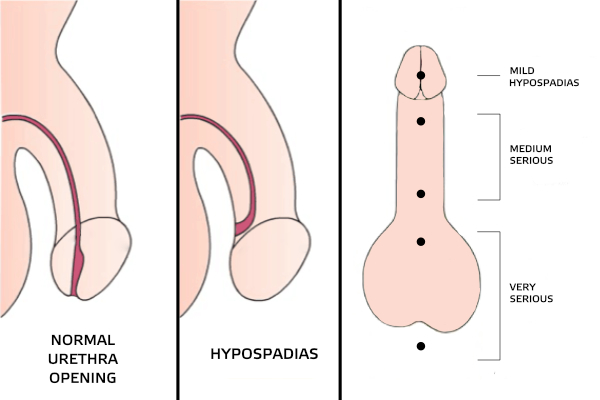
Hypospadias
Hypospadias is a common structural difference of the penis where the urethra (the tube that carries urine from the bladder to the outside of the body) is located on the underside, not the tip of the penis. The opening can be located anywhere on the lower surface of the penis up to the scrotum.
A condition called chordee is often seen in hypospadias. Chordee is the descending curve of the penis. This can happen with or without hypospadias.
Types of hypospadias include:
- mild (urethral opening is located on the head of the penis, no curvature of the penis is present - glandular, coronary)
- moderate (urethral opening is located just below the head of the penis or in the middle of its body, there is a slight curvature of the penis - subcoronary, penile)
- very heavy (urethral opening is located at the base of the genital organ, or on the scrotum, is accompanied by a large curvature of the penis - penoscrotal, perineal)

Hypospadias occurs in one in 150-300 boys. If a boy has hypospadias, there is a 15 percent chance that his brother will have the condition. Eight percent of fathers who have a son with hypospadias also have the condition.
The exact cause of hypospadias is unknown. There are many factors believed to be involved in its development. Genetics, the environment and hormones can be the reasons that contribute to the development of hypospadias.
Hypospadias is usually noticed at birth. Together with the incorrectly placed opening, the foreskin is often incomplete and uneven, ie. hypospadiform rearranged. It's called a dorsal hood.
Treatment of hypospadias is surgical.
